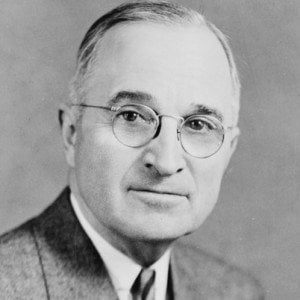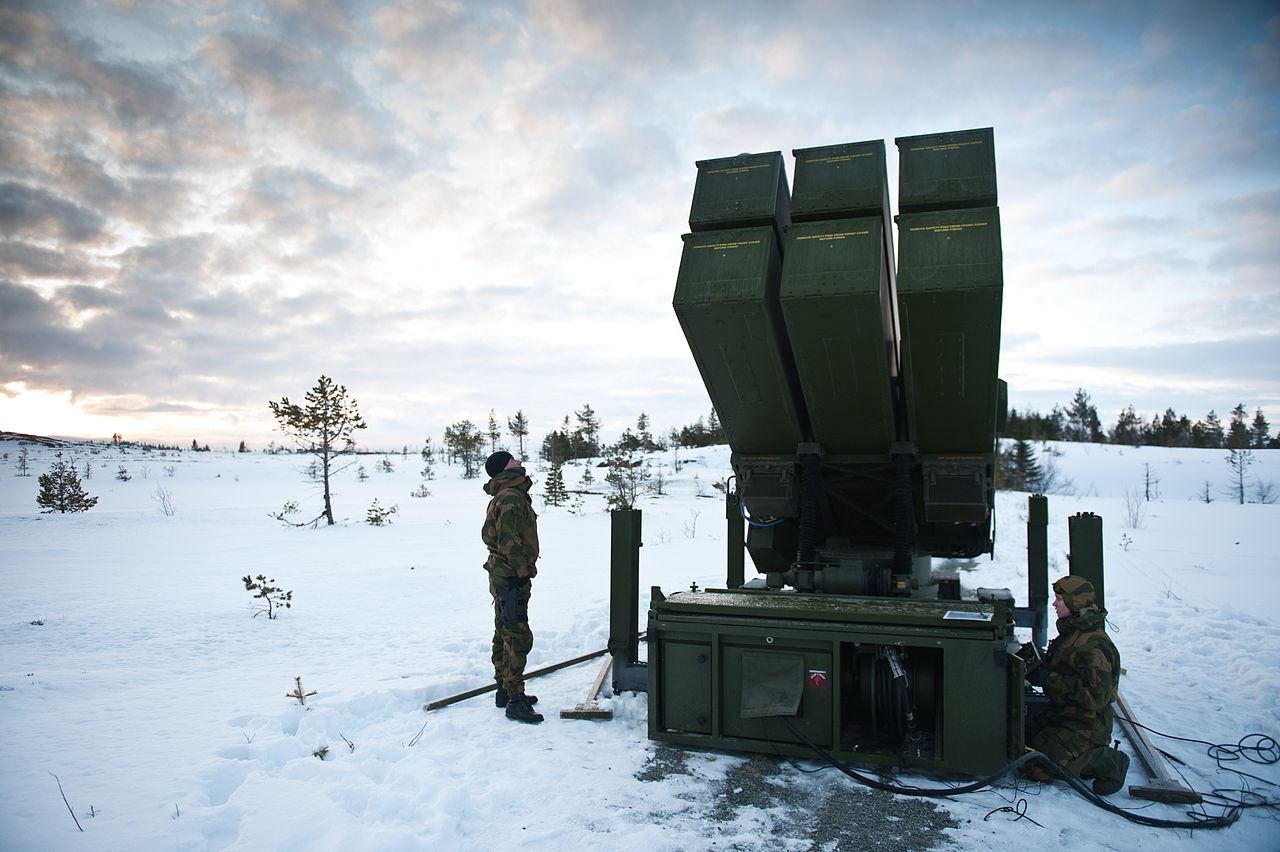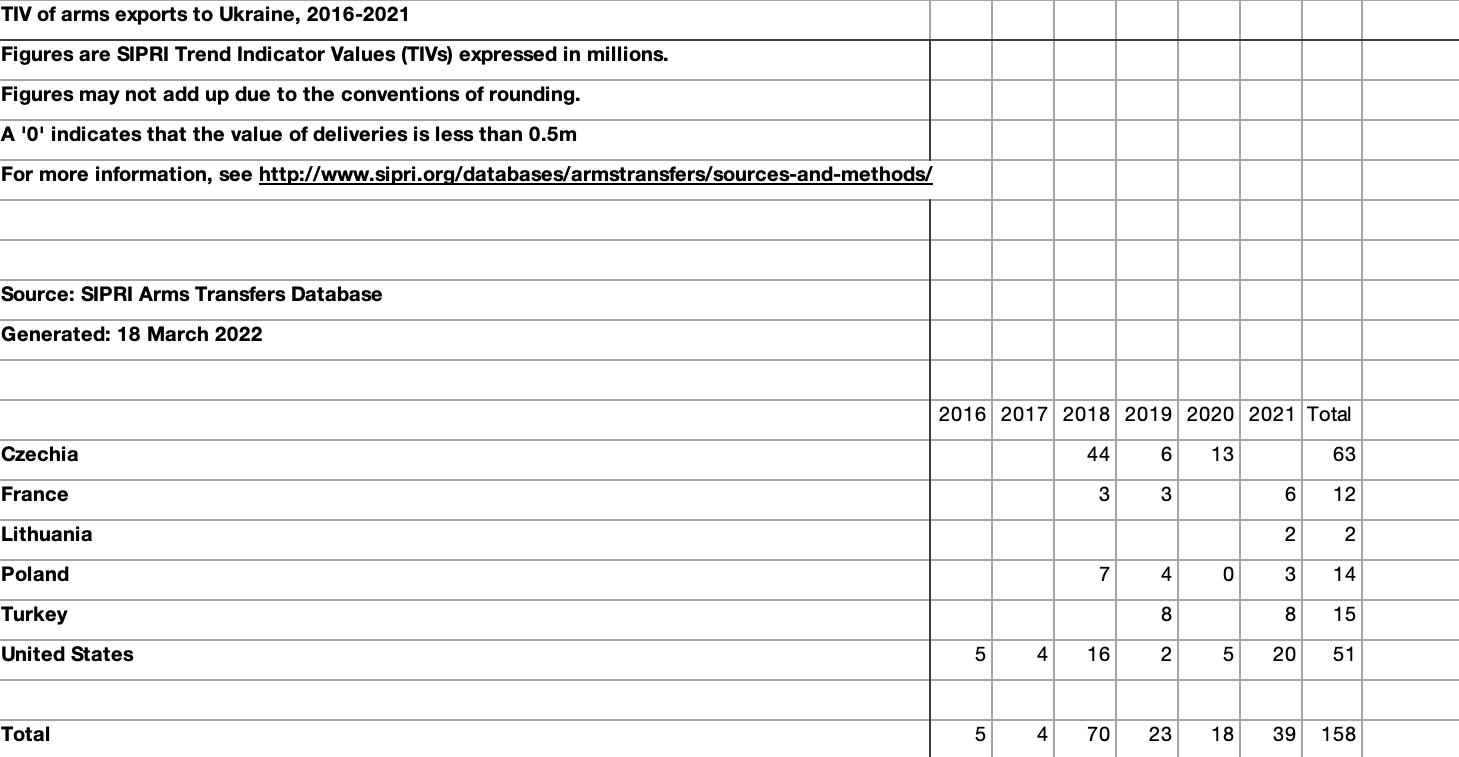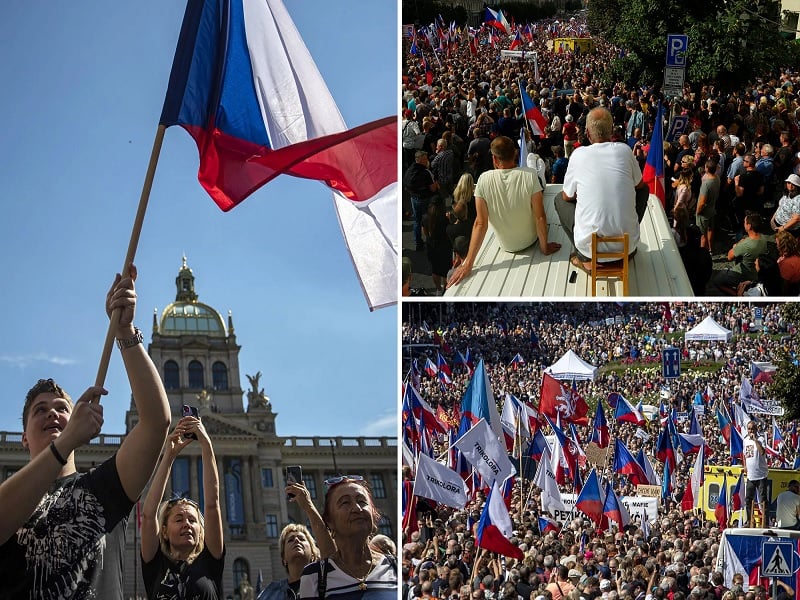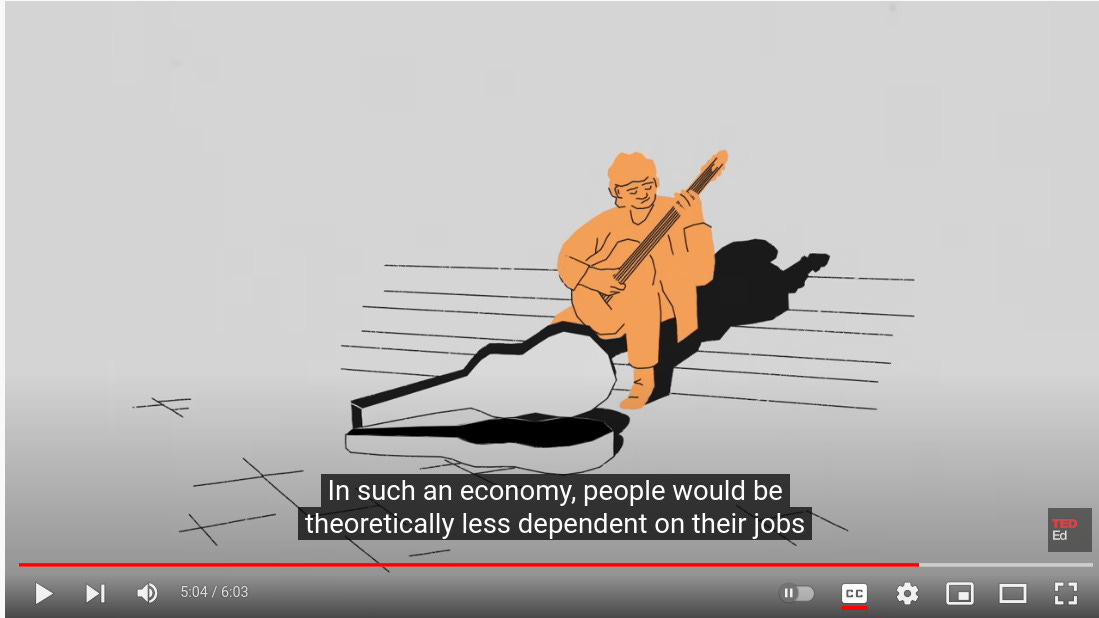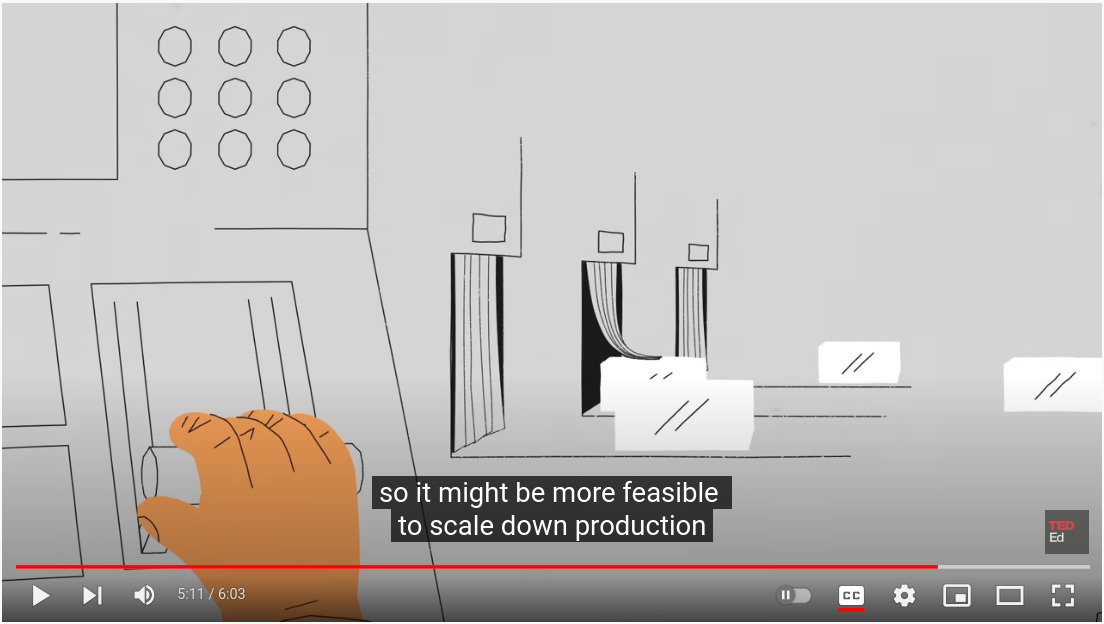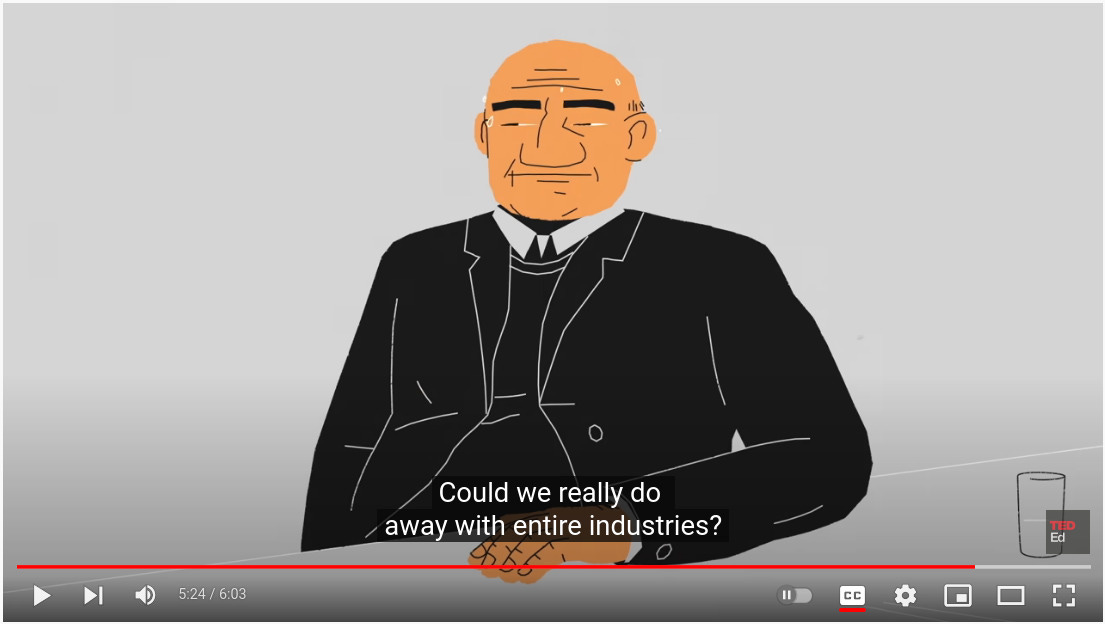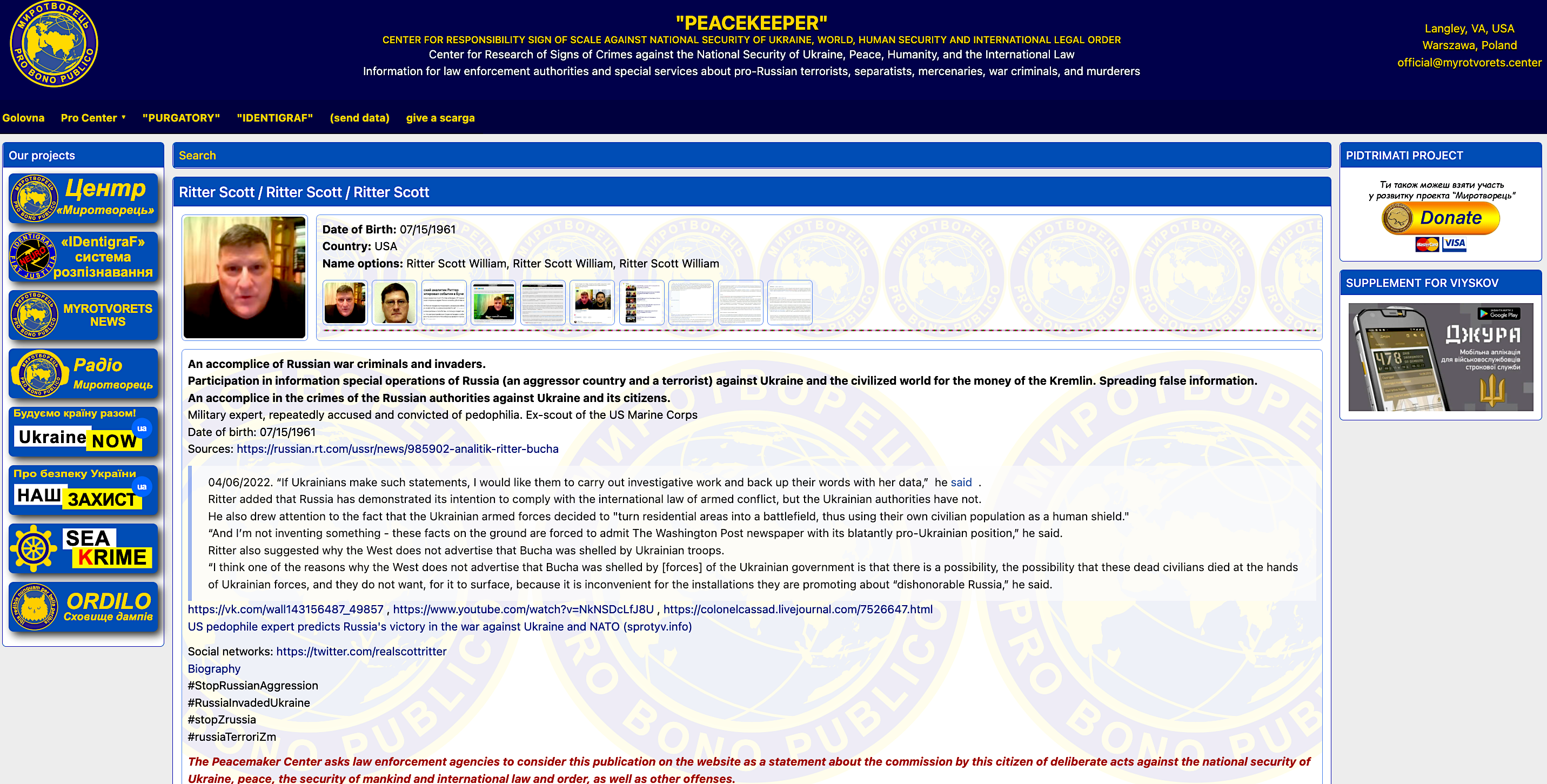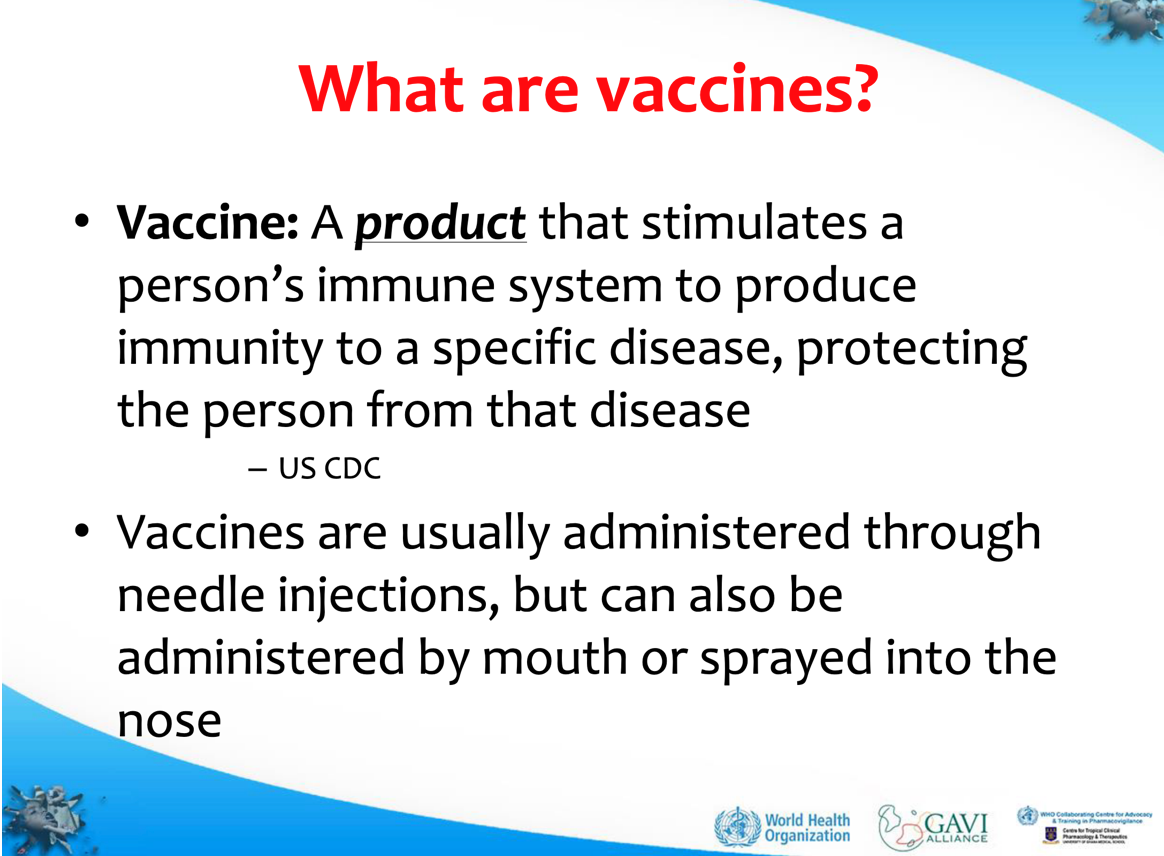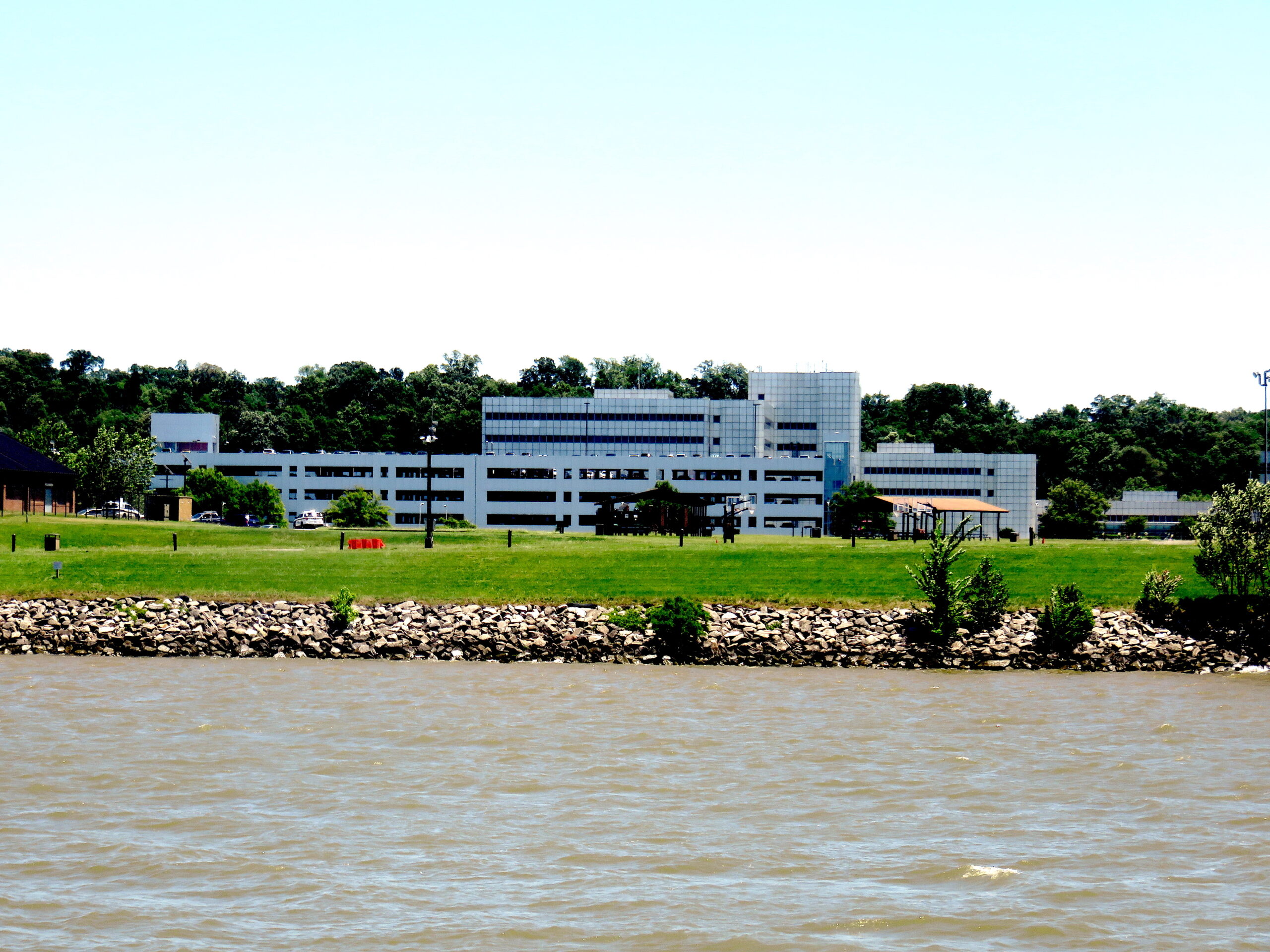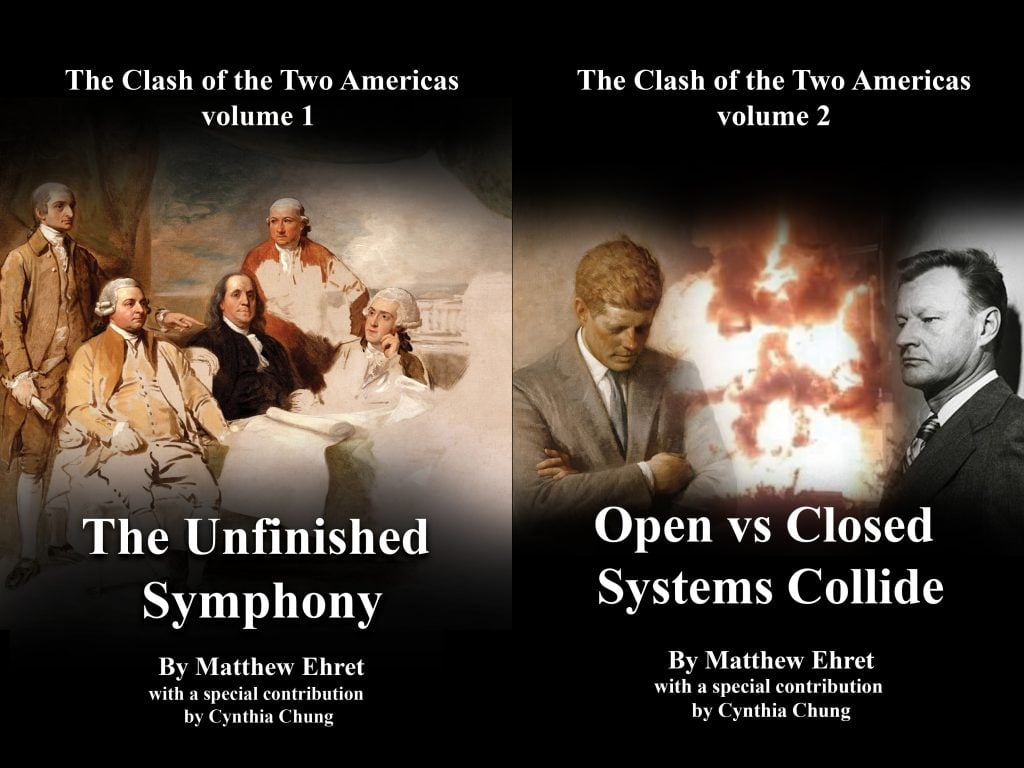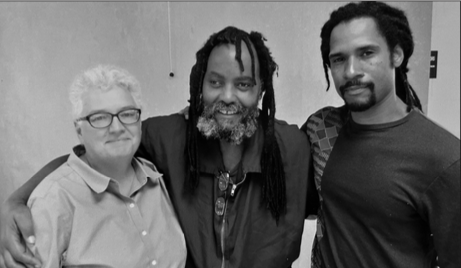Editor’s Note
This paper was presented by the late Sean Gervasi at the Conference on the Enlargement of NATO in Eastern Europe and the Mediterrenean, Prague, 13-14 January 1996. It was published on Global Research when our website was launched on September 9, 2001.
The late Sean Gervasi had tremendous foresight. He understood the process of NATO enlargement several years before it actually unfolded into a formidable military force.
Sean Gervasi passed away unexpectedly in Belgrade in July 1996.
He had predicted the breakup of Yugoslavia as part of a US-NATO project.
Sean Gervasi’s Legacy will Live
Michel Chossudovsky, September 7, 2022
Introduction
The North Atlantic Treaty Organization has recently sent a large task force into Yugoslavia, ostensibly to enforce a settlement of the Bosnian war arrived at in Dayton, Ohio at the end of 1995. This task force is said to consist of some 60,000 men, equipped with tanks, armor and artillery. It is backed by formidable air and naval forces. In fact, if one takes account of all the support forces involved, including forces deployed in nearby countries, it is clear that at least two hundred thousand troops are involved. This figure has been confirmed by U. S. defense sources. [ 1 ]
By any standards, the sending of a large Western military force into Central and Eastern Europe is a remarkable enterprise, even in the fluid situation created by the supposed end of the Cold War. The Ball:an task force represents not only the first major NATO military operation, but a major operation staged “out of area”, that is, outside the boundaries originally established for NATO military action.
However, the sending of NATO troops into the Balkans is the result of enormous pressure for the general extension of NATO eastwards.
If the Yugoslav enterprise is the first concrete step in the expansion of NATO, others are planned for the near future. Some Western powers want to bring the Visegrad countries into NATO as full members by the end of the century. There was resistance to the pressures for such extension among certain Western countries for some time. However, the recalcitrants have now been bludgeoned into accepting the alleged necessity of extending NATO.
The question is: why are the Western powers pressing for the expansion of NATO? Why is NATO being renewed and extended when the “Soviet threat” has disappeared? There is clearly much more to it than we have so far been told. The enforcement of a precarious peace in Bosnia is only the immediate reason for sending NATO forces into the Balkans.
There are deeper reasons for the dispatch of NATO forces to the Balkans, and especially for the extension of NATO to Poland, the Czech Republic and Hungary in the relatively near future. These have to do with an emerging strategy for securing the resources of the Caspian Sea region and for “stabilizing” the countries of Eastern Europe — ultimately for “stabilizing” Russia and the countries of the Commonwealth of Independent States. This is, to put it mildly, an extremely ambitious and potentially selfcontradictory policy. And it is important to pose some basic questions about the reasons being given for pursuing it.
For the idea of “stabilizing” the countries which formerly constituted the Socialist bloc in Europe does not simply mean ensuring political stability there, ensuring that the regimes which replaced Socialism remain in place. It also means ensuring that economic and social conditions remain unchanged. And, since the so-called transition to democracy in the countries affected has in fact led to an incipient deindustrialization and a collapse of living standards for the majority, the question arises whether it is really desirable.
The question is all the more pertinent since “stabilization”, in the sense in which it is used in the West, means reproducing in the former Socialist bloc countries economic and social conditions which are similar to the economic and social conditions currently prevailing in the West. The economies of the Western industrial nations are, in fact, in a state of semi-collapse, although the governments of those countires would never really acknowledge the fact. Nonetheless, any reasonably objective assessment of the economic situation in the West leads to this conclusion. And that conclusion is supported by official statistics and most analyses coming from mainstream economists.
It is also clear, as well, that the attempt to “stabilize” the former Socialist bloc countries is creating considerable tension with Russia, and potentially with other countries. Not a few commentators have made the point that Western actions in extending NATO even raise the risks of nuclear conflict. [2]
It is enough to raise these questions briefly to see that the extension of NATO which has, de facto, begun in Yugoslavia and is being proposed for other countries is to a large extent based on confused and even irrational reasoning. One is tempted to say that it results from the fear and willfulness of certain ruling groups. To put it most bluntly, why should the world see any benefit in the enforced extension to other countries of the economic and social chaos which prevails in the West, and why should it see any benefit in that when the very process itself increases the risks of nuclear war?
The purposes of this paper are to describe what lies behind the current efforts to extend NATO and to raise some basic questions about whether this makes any sense, in both the narrow and deeper meanings of the term.
NATO in Yugoslavia
The North Atlantic Treaty Organization was founded in 1949 with the stated purpose of protecting Western Europe from possible military aggression by the Soviet Union and its allies.
With the dissolution of the Communist regimes in the former Socialist bloc in 1990 and 1991, there was no longer any possibility of such aggression, if there ever really had been. The changes in the former Communist countries made NATO redundant. Its raison d’etre had vanished. Yet certain groups within the NATO countries began almost immediately to press for a “renovation” of NATO and even for its extension into Central and Eastern Europe. They began to elaborate new rationales which would permit the continuation of business as usual.
The most important of these was the idea that, with the changes brought about by the end of the Cold War, the Western countries nonetheless faced new “security challenges” outside the traditional NATO area which justified the perpetuation of the organization. The spokesmen for this point of view argued that NATO had to find new missions to justify its existence.
The implicit premise was that NATO had to be preserved in order to ensure the leadership of the United States in European and world affairs. This was certainly one of the reasons behind the large-scale Western intervention — in which the participation of US NATO partners was relatively meagre — in Kuwait and Iraq in 1990 and 1991. The coalition which fought against Iraq was cobbled together with great difficulty. But it was seen by the United States government as necessary for the credibility of the US within the Western alliance as well as in world affairs.
The slogan put forward by the early supporters of NATO enlargement was “NATO: out of area or out of business”, which made the point, although not the argument, as plainly as it could be made. [3]
Yugoslavia has also been a test case, and obviously a much more important one. The Yugoslav crisis exploded on the edge of Europe, and the Western European nations had to do something about it. Germany and the United States, on the other hand, while seeming to support the idea of ending the civil wars in Yugoslavia, in fact did everything they could to prolong them, especially the war. in Bosnia. t41 Their actions perpetuated and steadily deepened the Yugoslav crisis.
It is important to recognize that, almost from the beginning of the Yugoslav crisis, NATO sought to involve itself. That involvement was obvious in 1993 when NATO begari to support UNPROFOR operations in Yugoslavia, especially in the matter of the blockade against the Federal Republic of Yugoslavia and the enforcement of a no-fly zone in Bosnian airspace.
That involvement, however, had much smaller beginnings, and it must be remembered that NATO as an organization was involved in the war in Bosnia-Herzegovina at a very early stage. In 1992, NATO sent a group of about 100 personnel to Bosnia-Herzegovina, where they established a military headquarters at Kiseliak, a short distance from Sarajevo. Ostensibly, they were sent to help United Nations forces in Bosnia.
It was obvious, however, that there was another purpose. A NATO diplomat described the operation to INTELLIGENCE DIGEST in the following terms at the time:
This is a very cautious first step, and we are definitely not making much noise about it. But it could be the start of something bigger…You could argue that NATO now has a foot in the door. Whether we manage to open the door is not sure, but we have made a start. [4]
It seems clear that NATO commanders were already anticipating the possibility that resistance to US and German pressures would be overcome and that NATO’s role in Yugoslavia would be gradually expanded.
Thus NATO was working to create a major “out of area” mission almost from the time that the war in Bosnia-Herzegovina began. The recent dispatch of tens of thousands of troops to Bosnia, Austria, Hungary, Croatia and Serbia is thus simply the culmination of a process which began almost four years ago. It was not a question of proposals and conferences. It was a question of inventing operations which, with the backing of key countries, could eventually lead to NATO’s active engagement “out of area”, and thus to its own renovation.
The Eastward Expansion of NATO
NATO had never carried out a formal study on the enlargement of the alliance until quite recently, when the Working Group on NATO Enlargement issued its report. No doubt there were internal classified studies, but nothing is known of their content to outsiders.
Despite the lack of clear analysis, however, the engines for moving things forward were working hard from late 1991. At the end of that year, NATO created the North Atlantic Cooperation Council. NATO member nations then invited 9 Central and East European countries to join the NACC in order to begin fostering cooperation between the NATO powers and former members of the Warsaw Pact.
This was a fìrst effort to offer something to East European countries wishing to join NATO itself. The NACC, however, did not really satisfy the demands of those countries, and in the beginning of 1994 the US launched the idea of a Partnership for Peace. The PFP offered nations wishing to join NATO the possibility of co-operating in various NATO activities, including training exercises and peacekeeping. More than 20 countries, including Russia, are now participating in the PFP.
Many of these countries wish eventually to join NATO. Russia obviously will not. join. It believes that NATO should not be moving eastwards. According to the Center for Defense Infromation in Washington, a respected independent research center on military affairs, Russia is participating in the PFP “to avoid being shut out of the European security structure altogether.” [5]
The movement toward the enlargement of NATO has therefore been steadily gathering momentum. The creation of the North Atlantic Cooperation Council was more or less an expression of sympathy and openness toward those aspiring to NATO membership. But it did not carry things very far. The creation of the Partnership for Peace was more concrete. It actually involved former Warsaw Pact members in NATO itself. It also began a “two-track” policy toward Russia, in which Russia was given a more or less empty relationship with NATO simply to allay its concerns about NATO expanslon.
However, despite this continous development, the public rationale for this expansion has for the most part rested on fairly vague premises. And this leads to the question of what has been driving the expansion of NATQ during the last four years. The question must be posed for two areas: the Balkans and the countries of Central Europe. For there is an important struggle going on in the Balkans, a struggle for mastery of the southern Balkans in particular. And NATO is now involved in that struggle. There is also, of course, a new drift back to Cold-War policies on the part of certain Western countries. And that drift is carrying NATO into Central Europe.
The Struggle for Mastery in the Balkans
We have been witnessing, since 1990, a long and agonizing crisis in Yugoslavia. It has brought the deaths of tens of thousands, driven perhaps two million people from their homes and caused turmoil in the Balkan region. And in the West it is generally believed that this crisis, including the civil wars in Croatia and Bosnia-Herzegovina, was the result of internal Yugoslav conflicts, and specifically of conflicts between Croats, Serbs and Bosnian Muslims. This is far from the essence of the matter.
The main problem in Yugoslavia, from the first, was foreign intervention in the country’s internal affairs. Two Western powers, the United States and Germany, deliberately contrived to destabilize and then dismantle the country. The process was in full swing in the 1 980s and accelerated as the present decade began. These powers carefully planned, prepared and assisted the secessions which broke Yugoslavia apart. And they did almost everything in their power to expand and prolong the civil wars which began in Croatia and then continued in Bosnia-Herzegovina. They were involved behind the scenes at every stage of the crisis.
Foreign intervention was designed to create precisely the conflicts which the Western powers decried. For they also conveniently served as an excuse for overt intervention once civil wars were under way.
Such ideas are, of course, anathema in Western countries. That is only because the public in the West has been systematically misinformed by war propaganda. It accepted almost from the beginning the version of events promuligated by governments and disseminated through the mass media. It is nonetheless true that Germany and the US were the principal agents in dismantling Yugoslavia and sowing chaos there.
This is an ugly fact in the new age of realpolitik and geo-political struggles which has succeeded the Cold War order. Intelligence sources have begun recently to allude to this reality in a surprisingly open manner. In the summer of 1995, for instance, INTELLIGENCE DIGEST, a respected newsletter published in Great Britain, reported that:
The original US-German design for the former Yugoslavia [included] an independent Muslim-Croat dominated BosniaHerzegovina in alliance with an independent Croatian and alongside a greatly weakened Serbia. [6]
Every senior official in most Western governments knows this description to be absolutely accurate. And this means, of course, that the standard descriptions of “Serbian aggression” as the root cause of the problem, the descriptions of Croatia as a “new democracy”, etc. are not just untrue but actually designed to deceive.
But why? Why should the media seek to deceive the Western public? It was not simply that blatant and large-scale intervention in Yugoslav affairs had to be hidden from public view. It was also that people would ask questions about why Germany and the US deliberately created havoc in the Balkans. They wanted inevitably to know the reasons for such actions. And these had to be hidden even more carefully than the destructive actions of great powers.
At root, the problem was that the United States had an extremely ambitious plan for the whole of Europe. It is now stated quite openly that the US considers itself a “European power”. In the 1980s, this assertion could not be made so easily. That would have caused too much dissension among Western allies. But the US drive to establish its domination in Europe was nonetheless a fact. And the United States was already planning what is now openly talked about.
Quite recently, Richard Holbrooke, the Assistant Secretary of State for European affairs, made the official position clear. In a recent article in the influential journal FOREIGN AFFAIRS, he not only described the United States as a “European power” but also outlined his government’s ambitious plans for the whole of Europe. Referring to the system of collective security, including NATO, which the US and its allies created after the second world war, Mr. Holbrooke said:
This time, the United States must lead in the creation of a security architecture that includes and thereby stabilizes all of Europe — the West, the former Soviet satelIites of Central Europe and, most critically. Russia and the former republics of the Soviet Union. [7]
In short, it is now official policy to move towards the integration of all of Europe under a Western political and economic system, and to do so through the exercise of “American leadership”. This is simply a polite, and misleading, way of talking about the incorporation of the former Socialist countries into a vast new empire. [8]
It should not be surprising that the rest of Mr. Holbrooke’s article is about the necessity of expanding NATO, especially into Central Europe, in order to ensure the “stability” of the whole of Europe. Mr. Holbrooke states that the “expansion of NATO is an essential consequence of the raising of the Iron Curtain ” [9].
Thus, behind the repeated interventions in the Yugoslav crisis, there lay long-term strategic plans for the whole of Europe.
As part of this evolving scheme, Germany and the US originally determined to forge a new Balkan order, one based on the market organization of economies and parliamentary democracy. They wanted to put a definitive end to Socialism in the Balkans. [10] Ostensibly, they wanted to “foster democracy” by encouraging assertions of independence, as in Croatia. In reality, this was merely a ploy for breaking up the Balkans into small and vulnerable countries. Under the guise of “fostering democracy”, the way was being opened to the recolonization of the Balkans.
By 1990, most ofthe countries of Eastern Europe had yielded to Western pressures to establish what were misleadingly called “reforms”. Some had accepted all the Western conditions for aid and trade. Some, notably Bulgaria and Rumania, had only partically accepted them.
In Yugoslavia, however, there was resistance. The 1990 elections in Serbia and Monetenegro kept a socialist or social-democratic party in power. The Federal government thus remained in the hands of politicians who, although they yielded to pressures for “reforms” from time to time, were nevertheless opposed to the recolonization of the Balkans. And many of them were opposed to the fragmentation of Yugoslavia. Since the third Yugoslavia, formed in the spring of 1992, had an industrial base and a large army, that country had to be destroyed.
From the German point of view, this was nothing more than the continuation of a policy pursued by the Kaiser and then by the Nazis.
Once, Yugoslavia was dismantled and thrown into chaos, it was possible to begin reorganizing this central part of the Balkans. Slovenia, Croatia and Bosnia-Herzegovina were to be brought into a German sphere of interest. Germany acquired access to the sea on the Adriatic, and potentially, in the event that the Serbs could be overwhelmed, to the new :Rhine-Danube canal, a route which can now carry 3,000 ton ships from the North Sea into the Black Sea. The southem reaches of Yugoslavia were to fall into an American sphere of interest. Macedonia, which commands the only east-west and north-south passages across the Balkan Mountains, was to be the centerpiece of an American region. But the American sphere would also include Albania and, if those regions could be stripped away from Serbia, the Sanjak and Kosovo. Some American planners have even talked of the eventual emergence of a Greater Albania, under US and Turkish tutelage, which would comprise a chain of small Muslim States, possibly including BosniaHerzegovina, with access to the Adriatic.
Not surprisingly, Germany and the US, although they worked in concert to bring about the dismantlement of Yugoslavia, are now struggling for control of various parts of that coubtry, notably Croatia and Bosnia-Herzegovina. In fact, there is considerable jockeying for influence and commercial advantage throughout the Balkans. [11] Most of this competition is between Germany and the US, the partners who tore Yugoslavia apart. But important companies and banks from other European countries are also participating. The situation is similar to that which was created in Czechoslovakia by the Munich Agreement in 1938. Agreement was reached on a division of the spoils in order to avoid clashes which would lead immediately to war.
The New “Great Game” in the Caspian Sea
Yugoslavia is significant not just for its own position on the map, but also for the areas to which it allows access. And influential American analysts believe that it lies close to a zone of vital US interests, the Black Sea-Caspian Sea region.
This may be the real significance of the NATO task force in Yugoslavia.
The United States is now seeking to consolidate a new European-Middle Eastern bloc of nations. It is presenting itself as the leader of an informal grouping of Muslim countries stretching from the Persian Gulf into thje Batkans. This grouping includes Turkey, which is of pivotal importance in the emerging new bloc. Turkey is not just a part of the southern Balkans and an Aegean power. It also borders on Iraq, Iran and Syria. It thus connects southern Europe to the Middle East, where the US considers that it has vital interests.
The US hopes to expand this informal alliance with Muslim states in the Middle East and southern Europe to include some of the new nations on the southern rim of the former Soviet Union.
The reasons are not far to seek. The US now conceives of itself as being engaged in a new race for world resources. Oil is especially important in this race. With the war against Iraq, the US established itself in the Middle East more securely than ever. The almost simultaneous disintegration of the Soviet Union opened the possiblity of Western exploitation of the oil resources of the Caspian Sea region.
This region is extremely rich in oil and gas resources. Some Western analysts believe that it could become as important to the West as the Persian Gulf
Countries like Kazakhstan have enormous oil reserves, probably in excess of 9 billion barrels. Kazakhstan could probably pump 700,000 barrels a day. The problem, as in other countries of the region, at least from the perspective of Western countries, has been to get the oil and gas resources out of the region and to the West by safe routes. The movement of this oil and gas is not simply a technical problem. It is also political.
It is of crucial importance to the US and to other Western countries today to maintain friendly relations with countries like Kazakhstan. More importantly, it is important to know that that any rights acquired, to pump petroleum or to build pipelines to transport it, will be absolutely respected. For the amounts which are projected for investment in the region are very large.
What this means is that Western producers, banks, pipeline companies, etc. want to be assured of “political stability” in the region. They want to be assured that there will be no political changes which would threaten their new interests or potential ones.
An important article in THE NEW YORK TIMES recently described what has been called a new “grea’: game” in the region, drawing an analogy to the competition between Russia and Great Britain in the northwest frontier of the Indian subcontinent in the nineteenth century. The authors of the article wrote that,
Now, in the years after the cold war, the United States is again establishing suzerainty over the empire of a former foe. The disintegration of the Soviet Union has prompted the United States to expand its zone of military hegemony into Eastern Europe (through NATO) and into formerly neutral Yugoslavia. And — most important of all — the end of the cold war has permitted America to deepen its involvement in the Middle East. [12]
Obviously, there have been several reasons which prompted Western leaders to seek the expansion of NATO. One of these, and an important one, has clearly been a commercial one. This becomes more evident as one looks more closely at the parallel development of commercial exploitation in the Caspian Sea region and the movement of NATO into the Balkans.
On May 22, 1992, the North Atlantic Treay Organization issued a remarkable statement regarding the fighting then going on in Transcaucasia. This read in part as follows:
[The] Allies are profoundly disturbed by the continuing conflict and loss of life. There can be no solution to the problem of Nagomo-Karabakh or to the differences it has caused between Armenia and Azerbaijan by force. “Any action against Azerbaijan’s or any other state’s territorial integrity or to achieve political goals by force would represent a flagrant and unacceptable violation of the principles of international law. In particular we [NATO] could not accept that the recognized status of Nagorno-Karabakh or Nakhichevan can be changed unilaterally by force. [13]
This was a remarkable statement by any standards. For NATO was in fact issuing a veiled warning that it might have to take “steps” to prevent actions by govemments in the Caspian Sea region which it construed as threatening vital Westem interests.
Two days before NATO made this unusual declaration of interest in Transcaucasion affairs, an American oil Company, Chevron, had signed an agreement with the government of Kazakhstan for the development of the Tengiz and Korolev oil fields in the Westem part of the country. The negotiations for this agreement had been under way for two years prior to its being signed. And reliable sources have reported that they were in danger of breaking down at the time because of Chevron’s fears of political instability in the region. [14]
At the time that NATO made its declaration, of course, there would have been little possibility of backing up its warning. There was, first of all, no precedent at all for any large, out-of-area operation by NATO. NATO forces, furthermore, were far removed from Transcaucasia. It does not take a long look at a map of the Balkans, the Black Sea the Caspian Sea to realize that the situation is changing.
The Next Stage: “Stabilizing” the East
The current pressure for the enlargement of NATO to Central and Eastern Europe is part of an effort to create what is mistakenly called “the new world order”. It is the politico-military complement of the economic policies initiated by the major Western powers and designed to transform Central and East European society.
The United States, Germany and some of their allies are trying to build a truly global order around the North Atlantic Basin economy. There is actually nothing very new about the kind of order which they are trying to establish. It is to be founded on capitalist institutions. What is new is that they are trying to extend “the old order” to the vast territories which were thrown into chaos by the disintegration of Communism. They are also trying to incorporate into this “order” countries which were previously not fully a part of it.
In a word, they are trying to create a functioning capitalist system in countries which have lived under Socialism for decades, or in countries, such as Angola, which were seeking to break free of the capitalist system.
As they try to establish a “new world order”, the major Western powers must also think about how to preserve it. So, in the final analysis, they must think about extending their military power toward the new areas of Europe which they are trying to attach to the North Atlantic Basin. Hence the proposed role of NATO in the new European order.
The two principal architects of what might be a new, integrated and capitalist. Europe are the United States and Germany. They are working together especially closely on East European questions. In effect, they have formed a close alliance in which the US expects Germany to help manage not only West European but also East European affairs. Germany has become, as George Bush put it in Mainz in 1989, a “partner in leadership”.
This close relationship ties the US to Germany’s vision of what German and American analysts are now calling Central Europe. It is a vision which calls for: 1 ) the expansion of the European Union to the East; 2) German leadership in Europe; and 3) a new division of labor in Europe.
It is the idea of a new division of labor which is particularly important. In the German view, Europe will in the future be organized in concentric rings around a center, which will be Germany. The center will be the most developed region in every sense. It will be the most technically developed and the wealthiest. It will have the highest levels of wages, salaries and per capita income. And it will undertake only the most profitable economic activities, those which put it in command of the system. Thus Germany will take charge of industrial planning, design, the development of technology, etc., of all the activities which will shape and co-ordinate the activities of other regions.
As one moves away from the center, each concentric ring will have lower levels of development, wealth and income. The ring immediately surrounding Germany will include a great deal of profitable manufacturing and service activity. It is meant to comprise parts of Great Britain, France, Belgium, the Netherlands and northern Italy. The general level of income would be high, but lower than in Germany. The next ring would include the poorer parts of Western Europe and parts of Eastern E:urope, with some manufacturing, processing and food production. Wage and salary levels would be significantly lower than at the center.
It goes without saying that, in this scheme of things, most areas of Eastern Europe will be in an outer ring. Eastern Europe will be a tributary of the center. It will produce some manufactured goods, but not primarily for its own consumption. Much of its manufacturing, along with raw materials, and even food, will be shipped abroad. Moreover, even manufacturing will pay low wages and salaries And the general level of wages and salaries, and therefore of incomes, will be lower than they have been in the past.
In short, most of Eastern Europe will be poorer in the new, integrated system than it would have been if East European countries could make their own economic decisions about what kind of development to pursue. The only development possible in societies exposed to the penetration of powerful foreign capital and hemmed in by the rules of the International Monetary Fund is dependent development.
This will also be true of Russia and the other countries of the Commonwealth of Independent States. They will also become tributaries of the center, and there will be no question of Russia pursuing an independent path of development. There will obviously be some manufacturing in Russia, but there will be no possibility of balanced industrial development. For the priorities of development will be increasingly dictated by outsiders. Western corporations are not interested in promoting industrial development in Russia, as the foreign investment figures show.
The primary Western interest in the Commonwealth of Independent States is in the exploitation of its resources. The breakup of the Soviet Union was thus a critical step in opening the possibility of such exploitation. For the former republics of the USSR became much more vulnerable once they became independent. Furthermore, Western corporations are not interested in developing CIS resources for local use. They are interested in exporting them to the West. This is especially true of gas and petroleum resources. Much of the benefit from the export of resources would therefore accrue to foreign countries. Large parts of the former Soviet Union are likely to find themsevles in a situation similar to that of Third World countries.
What Germany is seeking, then, with the support of the US, is a capitalist rationalization of the entire European economy around a powerful German core. Growth and high levels of wealth in the core are to be sustained by subordinate activities in the periphery. The periphery is to produce food and raw materials, and it is to manufacture exports for the core and for overseas markets. Compared to the (Western and Eastern) Europe of the 1980s, then, the future Europe is to be entirely restructured, with lower and lower levels of development as ones moves away from the German center.
Thus many parts of Eastern Europe, as well as much of the former Soviet Union, are meant to remain permanently underdeveloped areas, or relatively underdeveloped areas. Implementation of the new dvision of labor in Europe means that they must be locked into economic backwardness.
Thus, for Eastern Europe and the countries of the CIS, the creation of an “integrated” Europe within a capitalist framework will require a vast restructuring. This restructuring could be very profitable for Germany and the US. It will mean moving backwards in time for the parts of Europe being attached to the West.
The nature of the changes under way has already been prefigured in the effects of the “reforms” implemented in Russia from the early 1990s. It was said, of course, that these “reforms” would eventually bring prosperity. This was, however, a hollow claim from the beginning. For the “reforms” implemented at Western insistence were nothing more than the usual restructuring imposed by the World Bank and the International Monetary Fund on Third World countries. And they have had the same effects.
The most obvious is the precipitous fall in living standards. One third of the population of Russia is now trying to survive on income below the official poverty line. Production since 1991 has fallen by more than half. Inflation is running at an annual rate of 200 per cent. The life expectancy of a Russian male fell from 64.9 years in 1987 to 57.3 years in 1994. [15] These figures are similar to those for countries like Egypt and Bangladesh. And, in present circumstances, there is really no prospect of an improvement in economic and social conditions in Rússia. Standards of living are actually likely to continue falling.
Clearly, there is widespread, and justified, anger in Russia, and in other countries, about the collapse of living standards which has accompanied the early stages of restructuring. This has contributed to a growing political backlash inside Russia and other countries. The most obvious recent example may be found in the results of the December parliamentary elections in Russia. It is also clear that the continuing fall in living standards in the future will create further angry reactions.
Thus the extension of the old world order into Eastern Europe and the CIS is a precarious exercise, fraught with uncertainty and risks. The major Western powers are extremely anxious that it should succeed, to some extent because they see success, which would be defined in terms of the efficient exploitation of these new regions, as a partial solution to their own grave economic problems. There is an increasingly strong tendency in Western countries to displace their own problems, to see the present international competition for the exploitation of new territories as some kind óf solution to world economic stagnation.
Western analysts rightly suppose that the future will bring political instability. So, as Senator Bradley put it recently, “The question about Russia is whether reform is reversible”. [ 16] Military analysts draw the obvious implication: the greater the military power which can potentially be brought to bear on Russia, the less the likelihood of the “reforms” being,reversed. This is the meaning of the following extraordinary statement by the Working Group on NATO Enlargement:
The security task of NATO is no longer limited to maintaining a defensive military posture against an opposing force. There is no immediate military security threat to Western Europe. The political instability and insecurity in Central and Eastern Europe, however, greatly affect the security of the NATO area. NATO should help to fulfill the Central and Eastern European desires for security and integration into Western structures, thus serving the interests in stability of its members. [17]
This represents an entirely new position on the part of NATO. It is a position which some NATO countries thought imprudent not long ago. And it is alarming, because it does not confront the real reasons behind the present pressure for NATO’s extension. However evasive and sophistical the reasoning of the Working Group may be, it appears that the debate in many countries is now closed. It would, of course, be much better if the real issues could be debated publicly. But for the moment they cannot be, and the pressure for NATO enlargement is going to continue.
The Dangers of Extending NATO
The current proposal to expand NATO eastward creates many dangers.
It should be statedl that many leaders in Western countries oppose the expansion of NATO, and they have repeatedly explained the dangers of such expansion. It is important to recogruze, that despite the official position of NATO and the recent report of the Working Group, there is strong opposition to NATO’s moving eastward. Nonetheless, for the moment, those in favor of NATO expansion have won the day.
Four dangers of NATO expansion in particular require discussion here.
The first is that the expansion of NATO will bring new members under the NATO umbrella. This will mean, for instance, that the United States and other Western members are obliged to defend, say, Slovakia against an attack. Where will an attack come from? Is NATO really prepared to defend Slovakia in the event of a conflict with another East European country?
In a country like the United States, this would be very unpopular. As Senator Kassebaum put it in October of last year:
Are the American people prepared to pledge, in the words of the North Atlantic Treaty, that an armed attack against one or more of these potential new members will be considered an attack against all? [18]
The issue of extending the umbrella is a critical one. For the NATO powers are nuclear powers. The Working Group report stated that, in appropriate circumstances, the forces of NATO allies could be stationed on the territory of new members. And the Working Group did not rule out, as it should have, the stationing of nuclear wepons on the territory of new members. The failure to rule out such a possibility means that NATO is embarking on a dangerous path, a path which increases the risks of nuclear war.
The Working Group’s silence on this matter cannot fail to be taken as a threat by those who are not joining NATO. And, clearly, the most important of these is Russia, because it, too, posseses nuclear weapons — as do the Ukraine and Kazakhstan.
The second danger is that expansion will jeopardize relations between the United States and Russia, or even lead to a second Cold War. While NATO countries present the organization as a defensive alliance, Russia sees it quite differently. For more than forty years, the Soviet Union considered NATO as an offensive alliance aimed at all the members of the Warsaw pact. The general opinion in Russia is still that NATO is an offensive alliance. The former Foreign Minister, Mr. Kozyrev, made this quite clear to NATO members. How can Russia possibly see things differently in the future?
The expansion of NATO is inevitably perceived by Russia as encirclement. It is seen as assuming that Russia will inevitably again become an aggressive state. This, however, is much more likely to push Russia toward belligerence than to do anything else. It will certainly not calm its fears about the intentions of NATO in moving into Eastern Europe. Referring to the recent NATO decision on expansion, the Director of the Institute of USA and Canada Studies of the Russian Academy of Sciences, stated recently that:
Russia is still a military superpower with a huge area and a large population. It is a country with enormous economic capabilities which has extraordinary potential for good or ill. But now it is a humiliated country in search of identity and direction. To a certain extent, the West and its position on NATPO expansion will determine what direction Russia chooses. The future of European Security depends on this decision.” [19]
The third danger in extending NATO is that will undermine the implementation of the START I Treaty and the ratification of the START II Treaty, as well as other arms control and arms limitation treaties designed to increase European security. The Ruyssians, for instance, have made it clear that they will go ahead with the implementation of the Conventional Armed Forces in Europe (CFE) Treaty “if the situation in Europe is stable”. The expansion of NATO into Eastern Europe, however, significantly changes the present equilibrium in Europe. So NATO countries are risking many of the achievements of the last 25 years in the field of disarmament. Some argue convincingly that NATO expansion will undermine the nuclear Non-Proliferation Treaty.
Such consequences will hardly make Europe, or the globe, a safer place in the future.
The fourth principal danger in NATO expansion is that it will unsettle the situation in Eastern Europe. NATO claims that its expansion will help to ensure stability. But Eastern Europe, particularly after the changes of the last five years, is already an unstable place. The piecemeal expansion of NATO into Eastern Europe will increase tensions between new members and those left outside. It cannot fail to do so. Those left outside NATO are bound to feel more insecure when NATO has established itself in a neighboring country. This would place place them in a buffer zone between an expanding NATO and Russia. They are bound to react in a fearful, and even hostile manner. The piecemeal expansion of NATO could even trigger an arms race in Eastern Europe.
The Weakness of the Western Position
When closely considered, the proposal to extend NATO eastward is not just dangerous. It also seems something of a desperate act. It is obviously irrational, for it can become a self-fulfilling prophecy. It can lead to a second Cold War between the NATO powers and Russia, and possibly to nuclear war. It must be assumed that no one really wants that.
Why, then, would the NATO countries propose such a course of action? Why would they be unable to weigh the dangers of their decision objectively?
Part of the answer is that those who have made this decision have looked at it in very narrow terms, without seeing the larger context in which NATO expansion would take place. When one does look at the larger context, the proposal to expand NATOis obviously irrational.
Consider the larger context. NATO proposes to admit certain countries in Central Europe as full members of the alliance in the near future. Other East European countries are being considered for later admission. This extension has two possible purposes. The fìrst is to prevent “the failure of Russian democracy”, that is, to ensure the continuation of the present regime, or something like it, in Russia. The second is to place NATO in a favorable position if a war should ever break out between Russia and the West.
In an age of nuclear weapons, pursuing the second purpose is perhaps even more dangerous than it was during the years of the Cold War, since there are now several countries with nuclear weapons which would potentially be ranged against NATO. The argument that NATO should be expanded eastward in order to ensure the West an advantage in the event of a nuclear war is not a very convincing one. And it would certainly not be convincing to Central European countries if it were openly spoke of. Those would be the countries most likely to suffer in the first stages of such a war. Their situation would be similar to that of Germany during the Cold War, as the German antiwar movement began to understand in the 1980s.
The main purpose of expanding NATO, as almost everyone has acknowledged, is to make sure that there is no reversal of the changes which have taken place in Russia during the last five years. That would end the dream of a three-part Europe united under the capitalist banner and close a very large new space for the operation of Western capital. A NATO presence in Central and Eastern Europe is simply a means of maintaining new pressure on those who would wish to attempt to change the present situation in Russia.
However, as has been seen, this also means locking Russia, and other countries of the CIS, into a state of underdevelopment and continuous economic and social crisis in which millions of people will suffer terribly, and in which there is no possibility of society seeking a path of economic and social development in which human needs determine economic priorities.
What is horribly ironic about this situation is the the Western countries are offering their model of economic organization as the solution to Russia’s problems. The realist analysts, of course, know perfectly well that it is no such thing. They are interested only in extending Western domination further eastward. And they offer their experience as a model for others only to beguile. But the idea that “the transition to democracy”, as the installation of market rules is often called, is important in the world battle for public opinion. It has helped to justify and sustain the policies which the West has been pursuing toward the countries of the CIS.
The Western countries themselves, however, are locked in an intractable economic crisis. Beginning in the early 1970s, profits fell, production faltered, long-term unemployment began to rise and standards of living began to fall. There were, of course, the ups and downs of the business cycle. But what was important was the trend. The trend of GDP growth in the major Western countries has been downward since the major recession of 1973-1975. In the United States, for instance, the rate of growth fell from about 4 per cent per year in the 1950s and the 1960s, to 2.9 per cent in the 1970s and then to about 2.4 per cent in the 1980s. Current projections for growth are even lower.
The situation was not very different in other Western countries. Growth was somewhat faster, but unemployment was significantly higher. The current rates of unemployment in Western Europe average about 11 per cent, and there is more unemployment hidden in the statistics as a result of various government pseudoemployment plans.
Both Western Europe and North America have experienced a prolonged economic stagnation. And capitalist economies cannot sustain employment and living standards without relatively rapid growth. In the 25 years after the second world war, most Western countries experienced rapid growth, on the order of 4 and 5 per cent per year. It was that growth which made it possible to maintain high levels of employment, the rise in wages and the advance of living standards. And there is no doubt that, in the postwar period, the Western countries made great advances. Large numbers of working class people were able to achieve decent living standards. The middle and upper classes prospered, indeed, many of them reached a standard of living which can only be called luxurious.
The postwar honeymoon, however, is clearly over. The great “capitalist revolution” touted by the Rockefellers is no more. “Humanized capitalism” is no more. Declining growth has now returned us to the age of “le capitalisme sauvage”. It has triggered economic and socil crisis in every Western country. It is undermining the principal achievements of the postwar period. In Europe, the Welfare state has been under attack for fifteen years by those who would shift the burden of crisis onto the shoulders of the less fortunate. In the United States, a relatively meagre “social net” to protect the poor is now being shredded by the aggressive and ignorant defenders of corporate interests, whò also want to be sure that those who can least afford it bear the brunt of the system’s crisis of stagnation.
The West, then, is itself locked in crisis. This is not a transient crisis or a “long cycle”, as academic apologists would have it. It is a systemic crisis. Thje market system can no longer produce anything like proesperity. The markets which drove the capitalist economy in the postwar period, automobiles, consumer durables, construction, etc. are all saturated, as sheaLs of government statistics in every country demonstrate. The system has not found new markets which could create an equivalent wave of prosperity. Moreover, the acceleration of technical progress in recent years has begun to eliminate jobs evetywhere at a staggering rate. There is no possible way of compensating for its effect, for creating new employment in sufficient quantity and at high wage levels.
Government and industry leaders in the West are fully aware of the situation in one sense. They know what the statistics are. They know what the problems are. But they are not able to see that the source of the problem is the fact that, having achieved very high levels of production, income and wealth, the present capitalist system has nowhere to go. Half-way solutions could be found, but Western leaders are unwilling to make the political concessions which they would require. In particular, the large concentrations of capital in Western countries are led by people who are constitutionally incapable of seeing that something fundamental is wrong. That would require them to agree to the curtailing of their power.
Therefore, the leaders of government and industry drive blindly on, not wishing to see, not prepared to accept policies that might set the present system on a path of transition to some more rational and more human way of organizing economic life. It is this blindness, grounded in confusion and fear, which has clouded the ability of Western leaders to think clearly about the risks of extending NATO into Eastern Europe. The Western system is experiencing a profound economic, social and political crisis. And Western leaders apparently see the exploitation of the East as the only large-scale project available which might stimulate growth, especially in Western Europe.
They are therefore prepared to risk a great deal for it. The question is: will the world accept the risks of East-West conflict and nuclear war in order to lock into one region economic arrangements which are already collapsing elsewhere?
Notes
- DEFENSE NEWS, 25 November 1995; see also Gary Wilson, “Anti-War Activists Demand: No More US Troops to the Balkans”, Workers World News Service, December 7, 1995.
- See for instance: “NATO Expansion: Flirting with Disaster”, THE DEFENSE MONITOR, November/December 1995, Center for Defense Information, Washington, D.C.
- Senatore Richard Lugar, “NATO: Out of Area or Out of Business”, Remarks Delivered to the Open Forum of the US State Department, August 2, 1993, Washington, D.C.
- “Changing Nature of NATO”, INTELLIGENCE DIGEST, 16 October 1992.
- THE DEFENSE MONITOR, loc. cit., page 2.
- “Bonn’s Balkans-to-Teheran Policy”, INTELLIGENCE DIGEST, 11 – 25 August 1995.
- Richard Holbrooke, “America, A European Power”, FOREIGN AFFAIRS, March/April l995, page 39.
- The crucial point is that Eastern Europe and the countries of the former USSR are to adopt the institutions prevailing in Western Europe, i.e., capitalism and parliamentary democracy.
- Holbrooke, loc. cit., page 43.
- See National Security Decision Directive, “United States Policy toward Yugoslavia”, Secret Sensitive, (declassified), The White House, Washington D.C., March 14, 1984.
- Joan Hoey,”The U.S.’Great Game’ in Bosnia”, THENATION, January 30, 1995.
- Jacob Heilbrunn e Michael Lind, “The Third American Empire”, THE NEW YORK TIMES, January 2, 1996.
- “The Commercial Factor Behind NATO’s Extended Remit”, INTELLIGENCE DIGEST, May 29, 1992.
- Idem.
- Senator Bill Bradley, “Eurasia Letter: A Misguided Russia Policy”, FOREIGN POLICY, Winter 1995-1996, page 89.
- Ibid. page 93.
- Draft Special Report of the Working Group on NATO Enlargement, May 1995.
- Quoted in THE DEFENSE MONITOR, loc. cit., page 5.
- Dr. Sergei Rogov, Director of the Russian Academy of Sciences’ Institute of USA and Canada Studies, quoted in DEFENSE MONITOR, loc. cit. page 4
 The Worldwide Corona Crisis, Global Coup d’Etat Against Humanity
The Worldwide Corona Crisis, Global Coup d’Etat Against Humanity
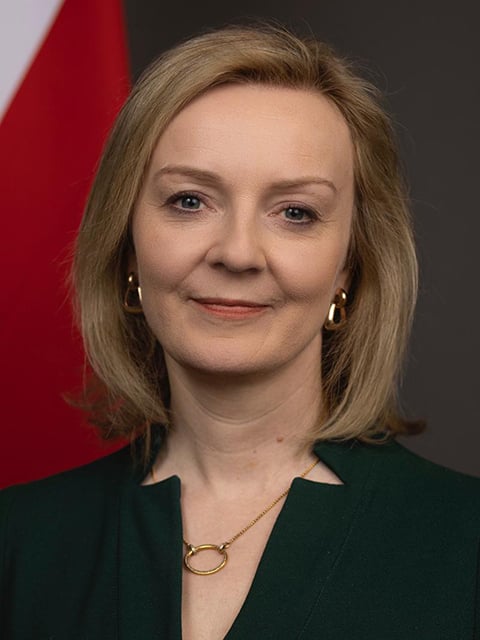
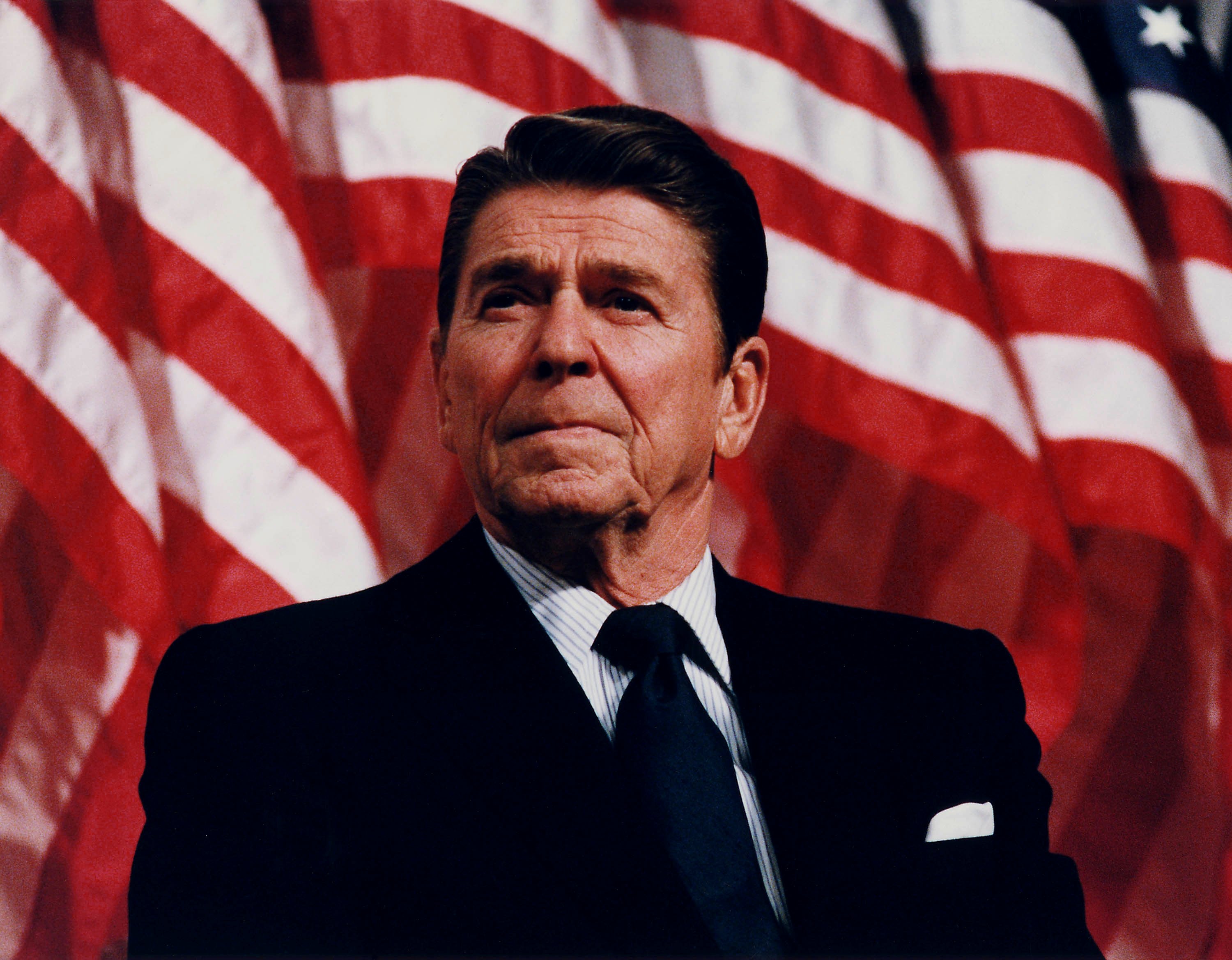 We recall Reagan’s earlier historic statement: “A nuclear war cannot be won and must never be fought. The only value in our two nations possessing nuclear weapons is to make sure they will never be used.”
We recall Reagan’s earlier historic statement: “A nuclear war cannot be won and must never be fought. The only value in our two nations possessing nuclear weapons is to make sure they will never be used.”